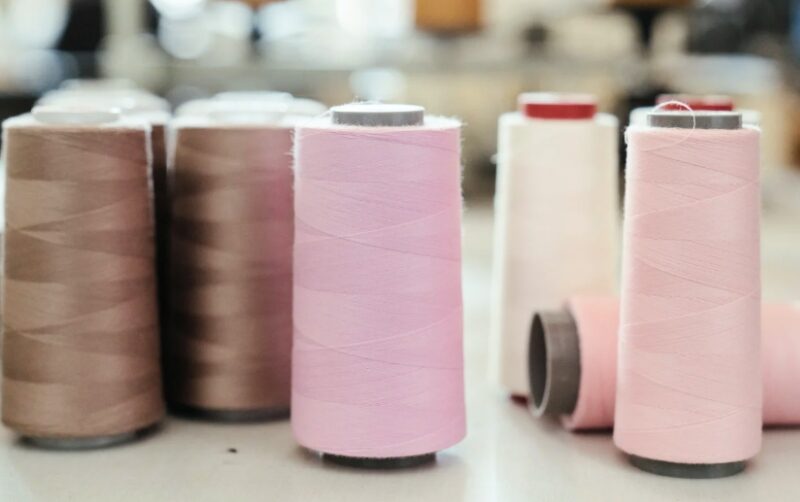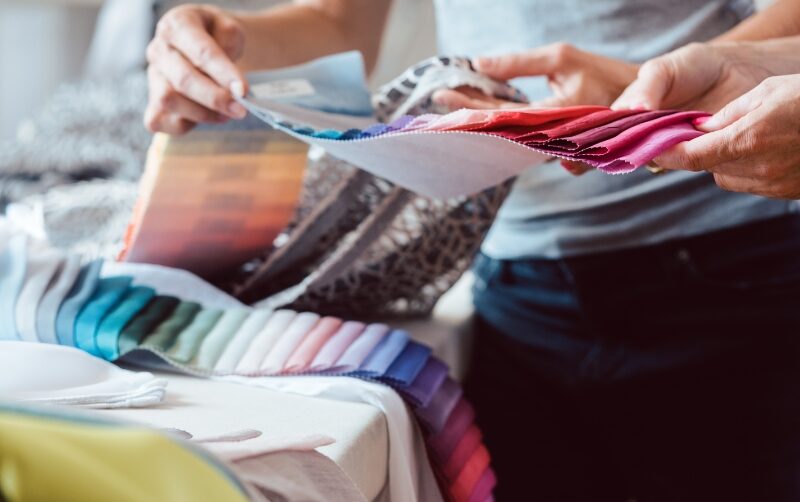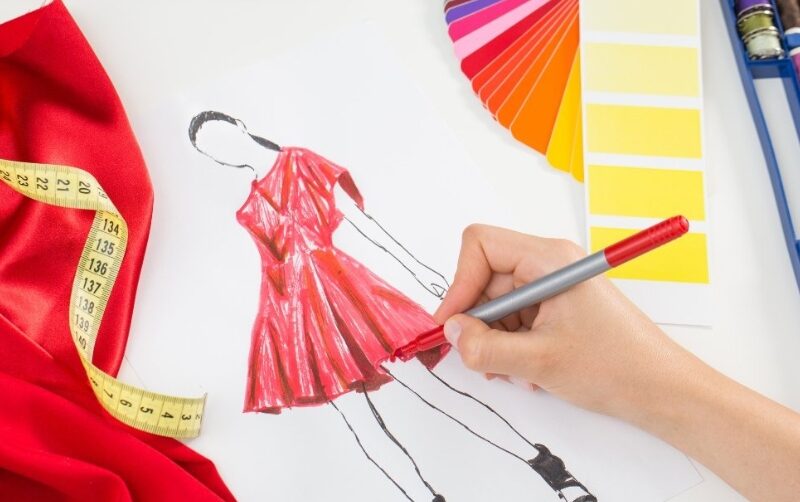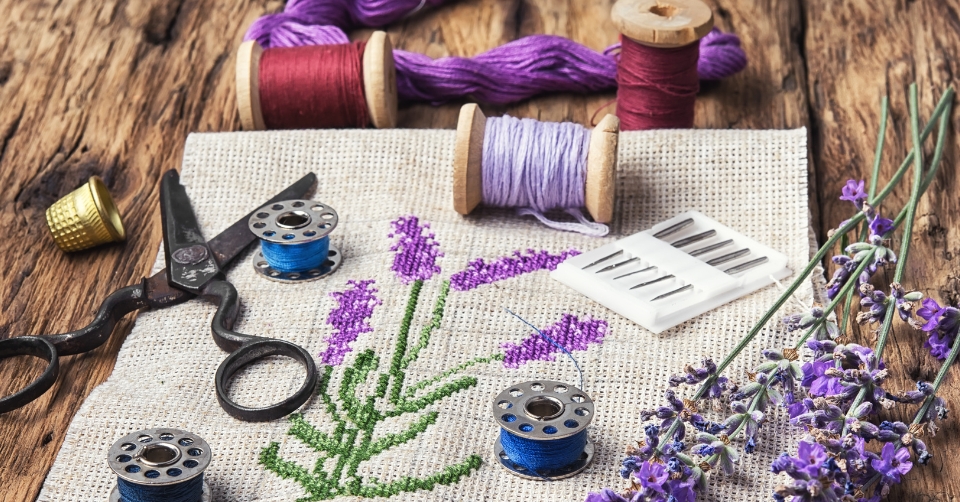
Needlecraft is a beautiful blend of tradition and creativity – where fabric, thread, and time meet to create something both personal and lasting. It’s a broad category that includes all kinds of stitched and fibre-based crafts, from delicate embroidery to bold statement quilting, precise lacework to free-flowing fibre arts.
Whether you’re sewing for function or for beauty, experimenting with fibres or refining your skills, needlecraft offers nearly endless ways to learn, create, and express yourself.
This guide is designed to help you explore a range of needlecrafts — a perfect starting point for discovering something new or revisiting old favourites. As you read through, why not tick off the ones you’ve already tried and add a few more to your “must-try-next” list?
Embroidery & Decorative Stitching
These styles focus on embellishment, texture, and surface design, using needle and thread to adorn and add beauty to cloth.
- Hand Embroidery – Freehand decorative stitching on fabric, often using traditional stitches like backstitch, satin stitch, and French knots.
- Cross-Stitch – Popular counted stitch technique using X-shaped stitches to build up a pattern on even-weave fabric.
- Needlepoint (Tapestry) – Decorative stitches worked on open canvas to produce detailed designs, often geometric or pictorial.
- Crewel Embroidery – A historic technique using wool threads and a variety of stitches to create textured surface designs.
- Blackwork Embroidery – A counted-thread style using black thread to form intricate geometric or floral motifs.
- Goldwork – The art of using real or imitation metallic threads to create rich, ornate designs — often used in ceremonial or couture textiles.
- Sashiko Stitching – A Japanese form of running stitch used traditionally for repair and reinforcement, now celebrated for its decorative, geometric beauty.
- Stumpwork – 3D embroidery that uses winding, padding and wire to achieve raised effects.
- Redwork / Whitework – Monochromatic embroidery styles, traditionally using red or white thread on plain cotton or linen.
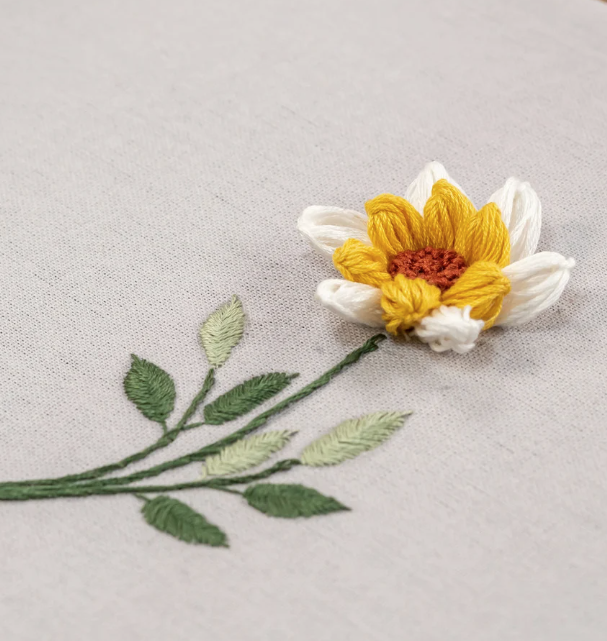

🧵 Tried any of these? If you love precision and decorative detail, consider exploring Blackwork or Stumpwork next!
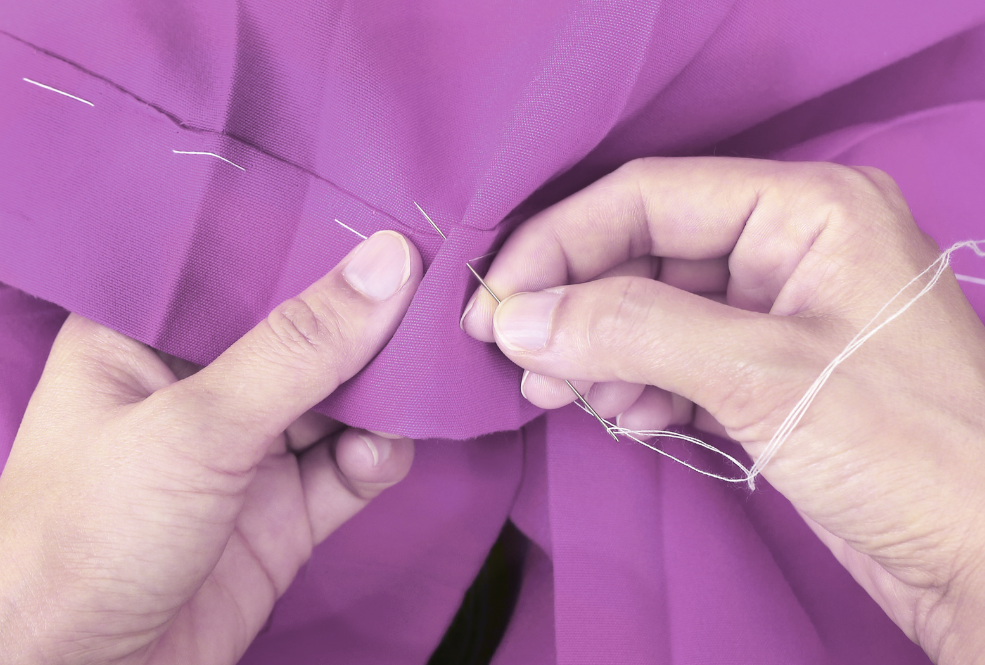
Sewing & Garment Construction
From repairing clothing to constructing entire outfits, traditional sewing skills are always in demand.
- Hand Sewing – The foundation of all sewing, whether mending, hemming, or slow stitching for pleasure.
- Machine Sewing – Brings speed, strength and precision to everything from home projects to tailored garments.
- Dressmaking – The full process of designing and constructing garments, from pattern drafting to fitting.
- Tailoring – High-skill garment construction focusing on precision and structure in suits, coats and formalwear.
- Quilt Piecing (Hand & Machine) – Joining fabric pieces together to form quilt tops – a fusion of artistry and precision.
✂️ Sewing your own clothes can be incredibly empowering – tried it yet?
Quilting & Patchwork
Quilting invites creativity, colour play and storytelling through textiles.
- Hand Quilting – Traditional, meditative stitching through quilt layers by hand.
- Machine Quilting – Faster, often more intricate quilting using a sewing machine.
- English Paper Piecing (EPP) – Uses paper templates to piece together precise shapes like hexagons and diamonds.
- Foundation Paper Piecing (FPP) – A technique using printed paper foundations to piece complex designs with high precision.
- Trapunto Quilting – Also called “stuffed quilting,” this method creates padded, raised details on your quilt.

If you love patchwork but haven’t tried EPP or Trapunto yet, they’re both satisfying next steps!
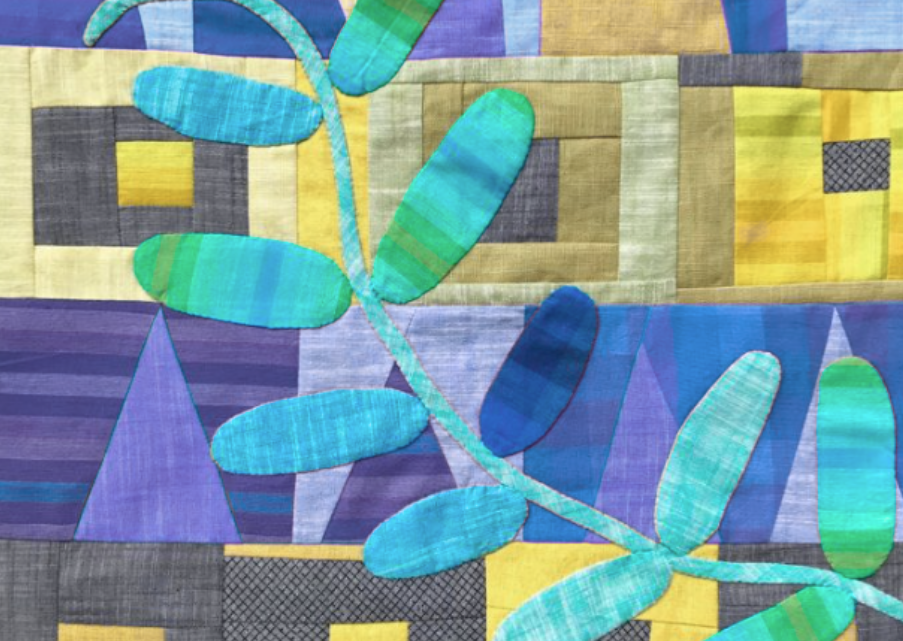
Appliqué & Fabric Manipulation
These techniques allow for visual storytelling and texture through layered fabrics and stitching.
- Hand Appliqué – Sewing fabric shapes to a base by hand for soft and organic results.
- Machine Appliqué – Achieve crisp, bold designs by stitching shapes with your sewing machine.
- Raw Edge Appliqué – Leaves the fabric edges visible for a more natural, textural effect.
- Reverse Appliqué – Involves layering and cutting away fabric to reveal designs underneath.
- Smocking – Gathering fabric with embroidery stitches to create flexible, decorative patterns.
Appliqué is a playground for personal style — mix techniques to develop your own visual voice!
Lace-Making & Delicate Needlework
These highly skilled crafts explore negative space with intricate precision.
- Bobbin Lace – Braiding and twisting threads wound on bobbins to create lace patterns.
- Needle Lace (e.g. Reticella, Punto in Aria) – Stitching lace forms with a needle and thread onto a temporary support.
- Tatting – Knotting thread into lace with a shuttle or needle, often forming rings and chains.
- Drawn Thread Work – Threads are removed from fabric and remaining threads are embroidered for decorative effect.
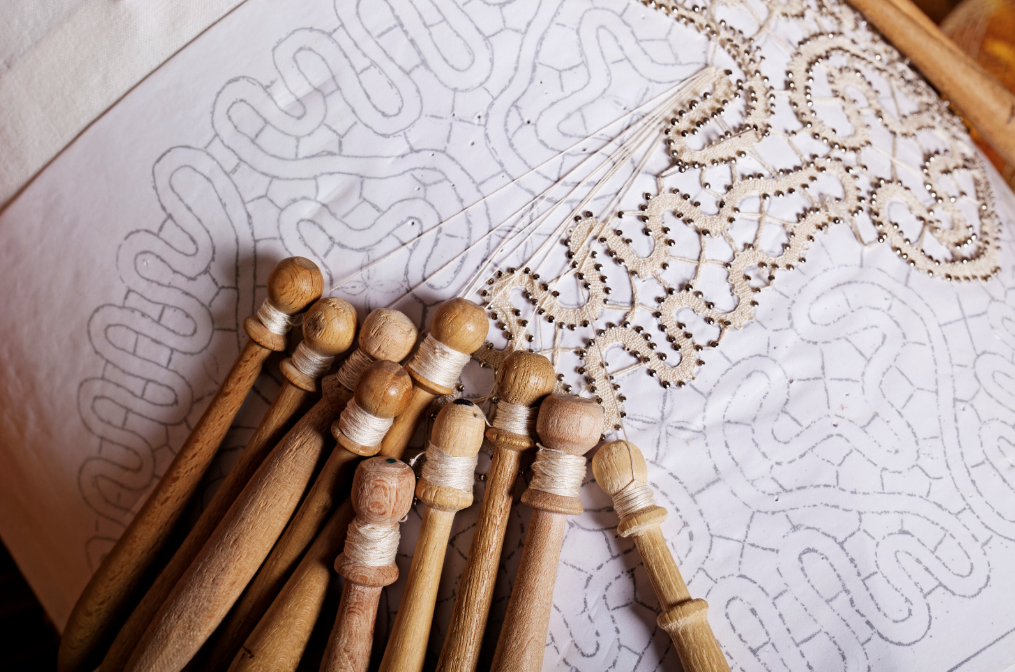
Never tried lace-making? Start with simple tatting or drawn thread work to get a feel for it.
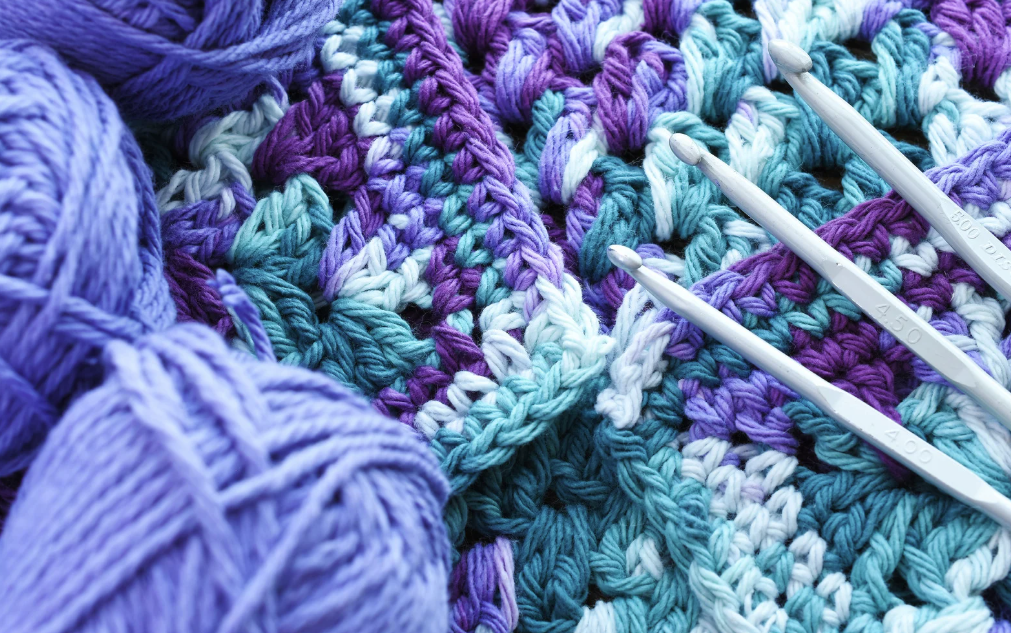
Knitting & Crochet (Often Called Fibre Arts)
Perfect for cosy garments, textured accessories, and meditative making.
- Hand Knitting – Working yarn with two needles to produce flexible fabric.
- Machine Knitting – Faster and more dynamic—great for complex or large-scale textile work.
- Crochet – One hook, infinite patterns. Faster than knitting for many, and fantastic for shaping.
- Filet Crochet – A lace-like crochet technique creating grid-based patterns.
Have you always crocheted but never knit? Or vice versa? Maybe now’s the time to pick up those next set of skills!
Rug & Tapestry Work
Perfect for bold, tactile creations built to last.
- Punch Needle Embroidery – Uses a special tool to stab thread/yarn through fabric, forming loops or flat stitches.
- Latch Hooking – Pulls short strands of yarn through a canvas base to create soft, plush rugs.
- Tufting – A modern, machine-assisted version of rug making — ideal for large-scale or experimental textile art.
- Rug Hooking – Traditional technique using a hook to pull loops of wool through a backing fabric.
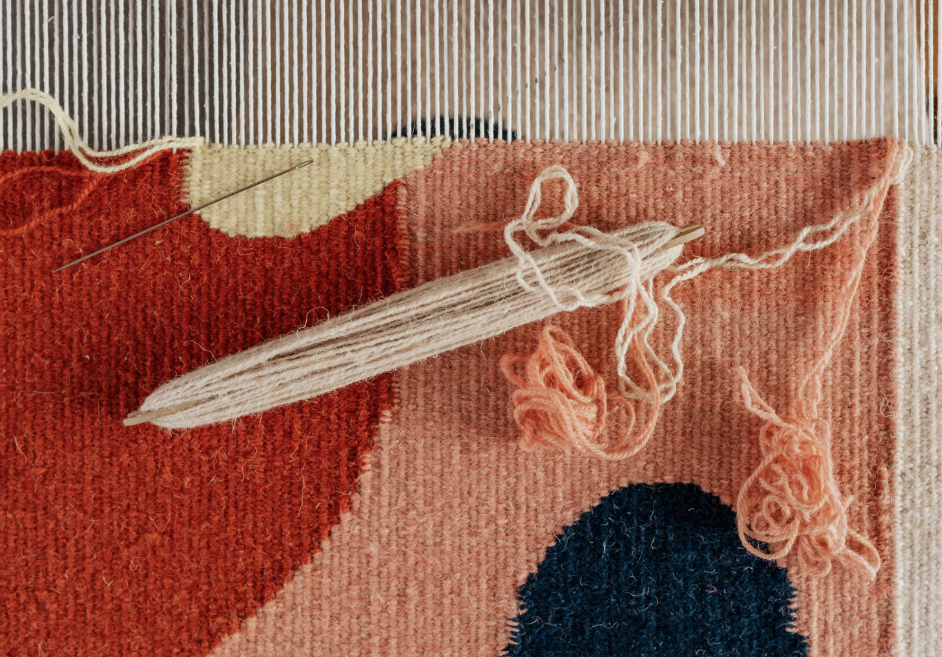
Looking for a big, satisfying project? Tufting or punch needle could be your next creative obsession!
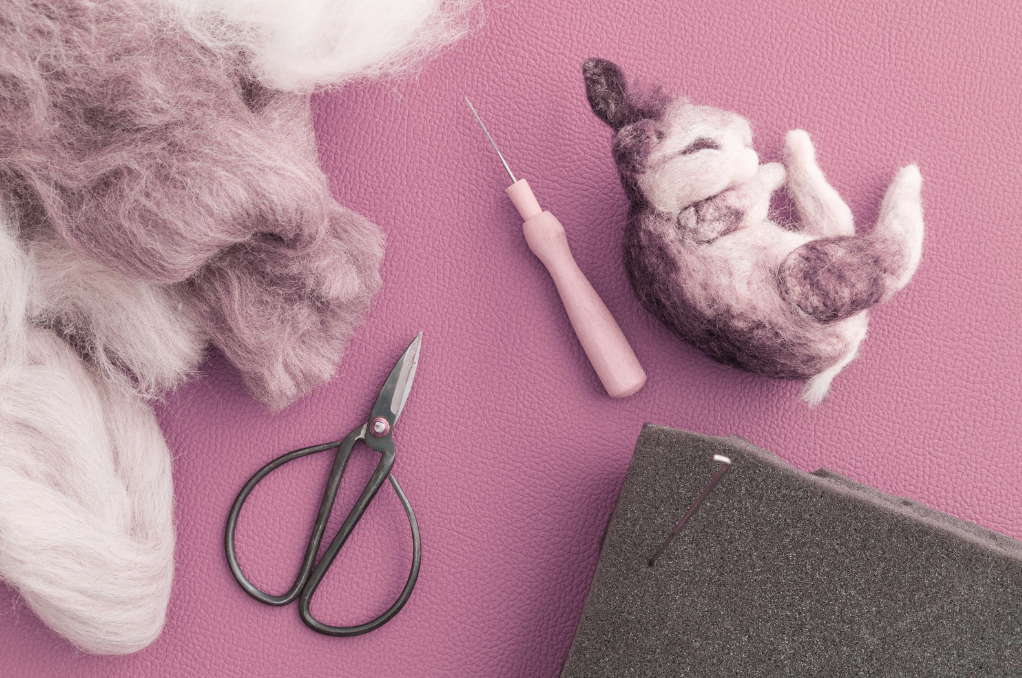
Needle Felting & Fibre Manipulation
Bring texture and even sculpture into your making with wool!
- Dry Needle Felting – Matting wool by repeatedly stabbing it with barbed needles — ideal for 3D shapes or textured embellishments.
- Wet Felting – Combines water, soap and friction to bind wool into a dense fabric — perfect for flat pieces like pouches, slippers, or cushions.
- Tambour Work – Uses a hook-like tambour needle to create a continuous chain stitch, frequently seen in couture embroidery and beadwork.
Love embroidery but want to take it further? Tambour work could be a beautiful next step.
From the meditative rhythm of hand embroidery to the sculptural creativity of needle felting – needlecrafts offer a rich and diverse range of making. Whether you’re stitching, quilting, knotting, or felting, each technique invites you to slow down, connect with your hands, and create something meaningful. These time-honoured crafts not only preserve tradition, but also allow for endless modern expression — offering a place where skill, imagination, and mindfulness meet.
